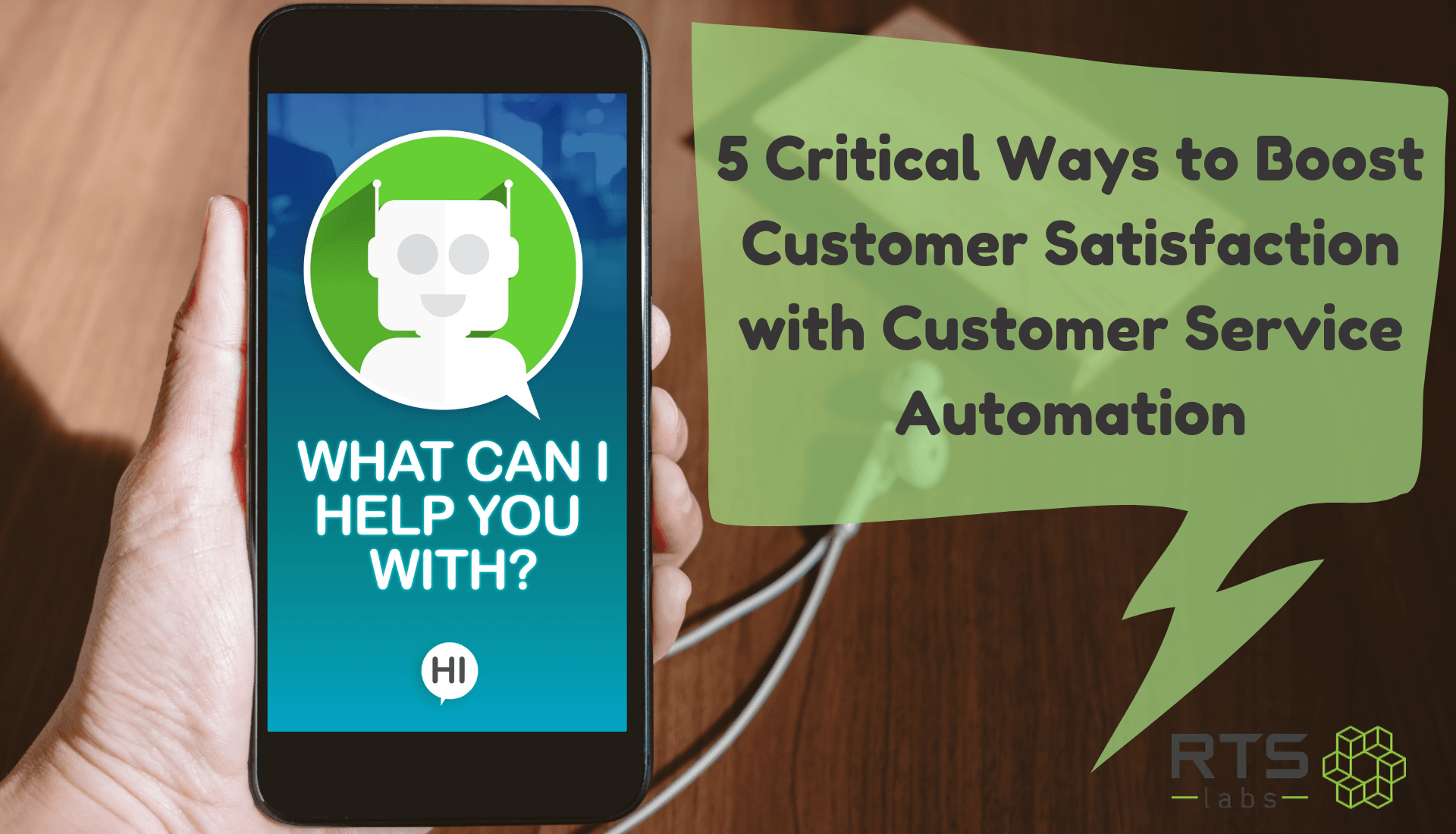Leaving your customer queries and support needs in the hands of customer service automation bots can seem like a PR nightmare waiting to happen. The mere thought of bots handling human concerns may even bring back memories of some of the unhelpful, tone-deaf auto-response fails on Twitter back in the day. But automation has come a long way since the now-infamous Bank of America incident where a bot tried to “help” an Occupy protester with his “service request.” And there are actually 5 critical ways to boost customer satisfaction with customer service automation.
Photo reads:
@OccupyLA: @BofA_Help @stevetimmis you can help by stop stealing people’s houses!!!!
@BofA_Help reply: @OccupyLA We’d be happy to review your account with you to discuss any concerns. Please let us know if you need assistance. ^sa
You might be surprised by just how effective automation can be, thanks to advancements that have been achieved in artificial intelligence and machine learning technology over the past five years. Companies use automation for a number of customer-facing tasks: product returns, ordering food, checking luggage, booking appointments … the list goes on. According to IBM, more than 85% of all customer interactions will be handled without humans by the year 2020.
Why not join them? We’ve got 5 reasons why you should.
Offer better customer service
It may seem counterintuitive that delegating customer service to a bot would actually improve customer service, but it does. First, your chatbot is always on. It doesn’t sleep, take holidays, or come to work late. It can deliver immediate responses, providing your customers with the answers they need instantly – especially if they’re simple ones that really shouldn’t take that long to provide.
This level of responsiveness makes the customer service interaction efficient and painless. According to Zendesk, looking up product information takes up approximately 20% of support agents’ time – which can actually cause frustration for the customer who needs an answer.
AI also removes a level of miscommunication, misunderstanding, and emotion that can happen between people. AI doesn’t come to work in a bad mood or hungover. It lacks bias and doesn’t get sassy when a strongly worded message comes through. Instead, your amazing support bot can take the feedback, respond promptly with the necessary information, and avoid an issue altogether. This can help reduce customer complaints and improve customer satisfaction.
Improve efficiency
How much time does it take for your support team to close each ticket? No matter how much of a rockstar each agent is, a support bot providing good customer service automation can beat them. As we mentioned, support agents spend 20% of their time hunting for information. IBM found that for the average six-minute call, as much as 75% of that time can be spent on manual research. Those minutes add up and aren’t necessary with the right technology.
AI can take over some of those manual research tasks and be used to answer the same common questions over and over again. That frees up your support team to spend more time on complicated issues. Money you would normally spend on extra support labor can then be freed up to spend in other ways to enhance the customer experience overall.
Give customers more of what they want
Your customers (well, most of them) don’t want to pick up the phone and talk to a human. Usually people only call when they get incredibly frustrated because they can’t find the information they need. One customer segment in particular – Millennials – prefers self-serve solutions over any other form of support – as long as it works right, of course. (And they have pretty high expectations.)
With AI on your side, common questions are answered more quickly. Deep learning can be employed to help improve your help sections by monitoring search queries and finding patterns. Once your deep learning program observes how customers interact with your help sections and gathers the appropriate data, the program can offer up changes and new articles to make your help sections more user friendly.
Gain deeper insights about customer service and customer satisfaction
Using customer service automation and AI goes beyond automated responses. A well-designed machine learning program can gather contextual information about customers and use that info to help inform your support people when they are dealing with a complicated issue. Order history, search preferences, and other interactions they’ve had with your brand can provide a bigger picture of who the person they’re talking to is and the history they have with your brand. This kind of data can also help you calculate each person’s customer lifetime value score, which is a very valuable insight to have.
Be proactive rather than reactive
When AI is embedded in your systems, it can monitor actions and look for distress indicators. Chatbots can proactively reach out to customers who appear to be having problems and respond in real time with support. This helps stop a problem in its tracks and enhances the customer experience overall. Win-win.
When not to use customer service automation
AI isn’t about replacing human interaction. It’s about enhancing workflows and the customer experience. Chatbots can’t handle complex situations. They can only answer questions by serving up programmed information and responses. They’re serving up data and information, which are great things, but that’s not the same thing as building relationships. If a customer gets angry, the problem needs to be handled by a person.
Customer service automation can work wonders for businesses that have the right technology partner to guide them, but employing deep learning and artificial intelligence is no small feat. If you’re ready to start exploring if AI and customer service automation are right for your specific organization – or you’re ready to start a project – the best place to begin is with a solid RFP, one that requires thoughtfulness and planning. Fortunately, we’ve got a template you can use – for this or any other project you’re ready to bid out.







